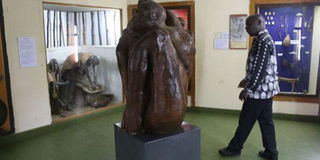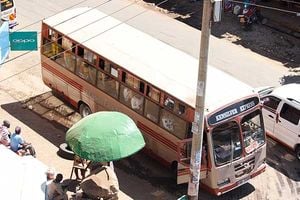Museum offers glimpses of the Ameru’s captivating past

Meru Museum Senior Curator Julius Juma Ogega at the museum on January 15, 2016. PHOTO | PHOEBE OKALL | NATION MEDIA GROUP
What you need to know:
The museum was the first stone building constructed in Meru in 1916 by the first colonial district commissioner E B Horne, who was posted to the area in 1908.
In 1968, colonial rulers moved out of the building after gaping cracks appeared on the walls sparking fears that it would collapse.
However, the building was rehabilitated in 1973. The renovations were meticulous and left the architectural features intact.
Many call it Mutindwa jwa Kangangi (town of the wanderer) but few know the origin of this other name for Meru town.
All it takes is a visit to the Meru Museum for one to get all these vital historical details.
The Meru Museum holds the key to the history of Meru town and the people.
The museum was the first stone building constructed in Meru in 1916 by the first colonial district commissioner E B Horne, who was posted to the area in 1908, having been transferred from Nyeri.
Mr Horne was named Kangangi (loosely meaning wanderer or white man) by the local people.
The name arose from a belief that white people never settled down but kept on moving from one place to another.
But Mr Horne did settle. He built his first office and administration building in Meru in 1916 using stones glued together with mud.
‘Kangangi’ also had a road constructed from Embu through Meru to Maua.
In 1968, colonial rulers moved out of the building after gaping cracks appeared on the walls sparking fears that it would collapse.
However, the building was rehabilitated in 1973. The renovations were meticulous and left the architectural features intact.
It is this building that was converted into a museum in 1974 after a facelift a year earlier.
Also inside were cells for prisoners who were held by colonial rulers.
The museum tells the history of the Meru people and their origin. On its walls are artifacts and writings that narrate the origin and history of the Ameru.
Conspicuous in its hall is the sculpture of Living Mugwe, a traditional leader revered by the Meru people.
There are also explanations of the traditions of the Ameru, including their homestead setting, traditional foods and rites of passage, among others.
The museum is also a site for exhibitions and attractions. These include a Nile crocodile pond, sculptures, tortoise den, snake pits, primates and shrub gardens, among others.





